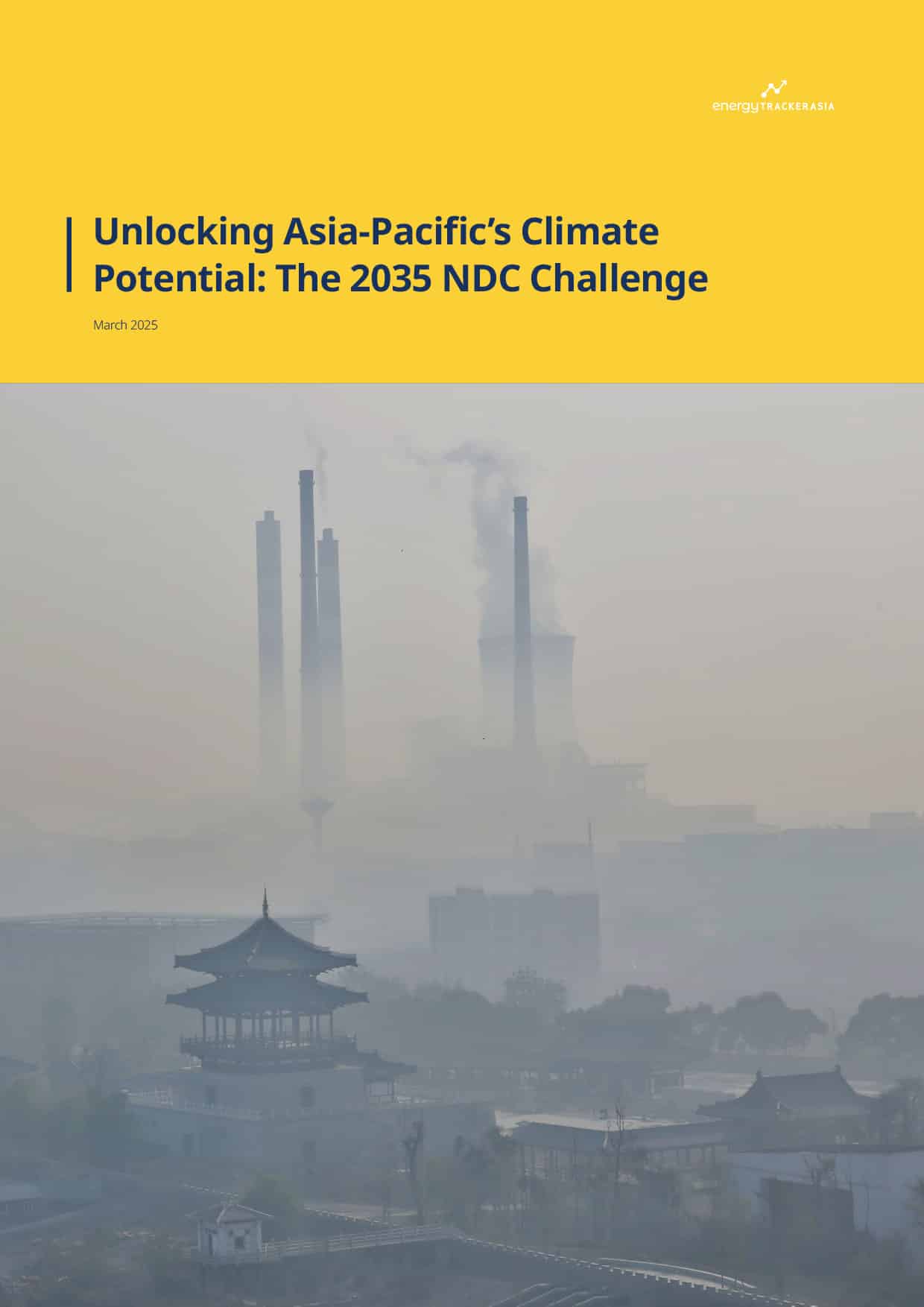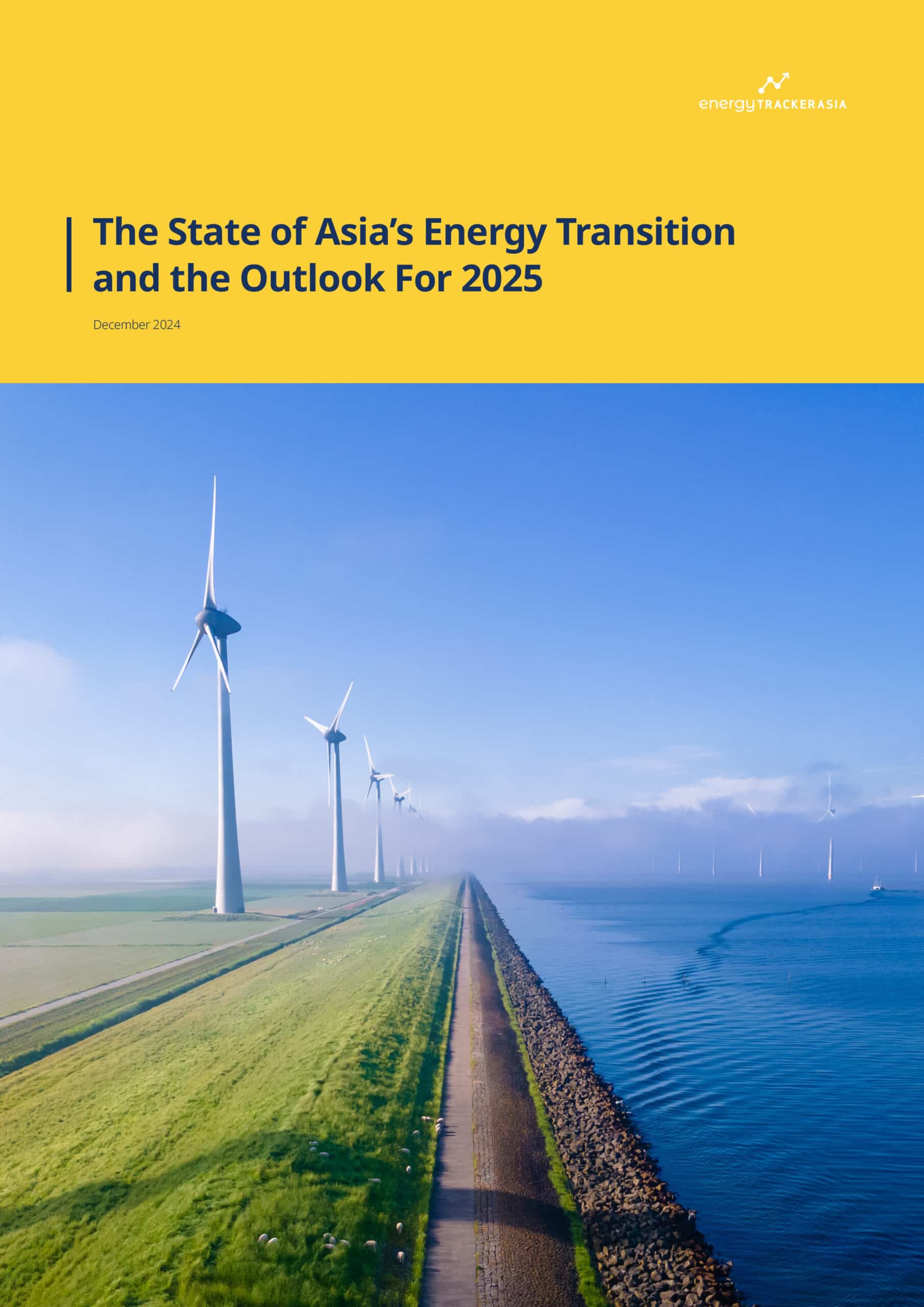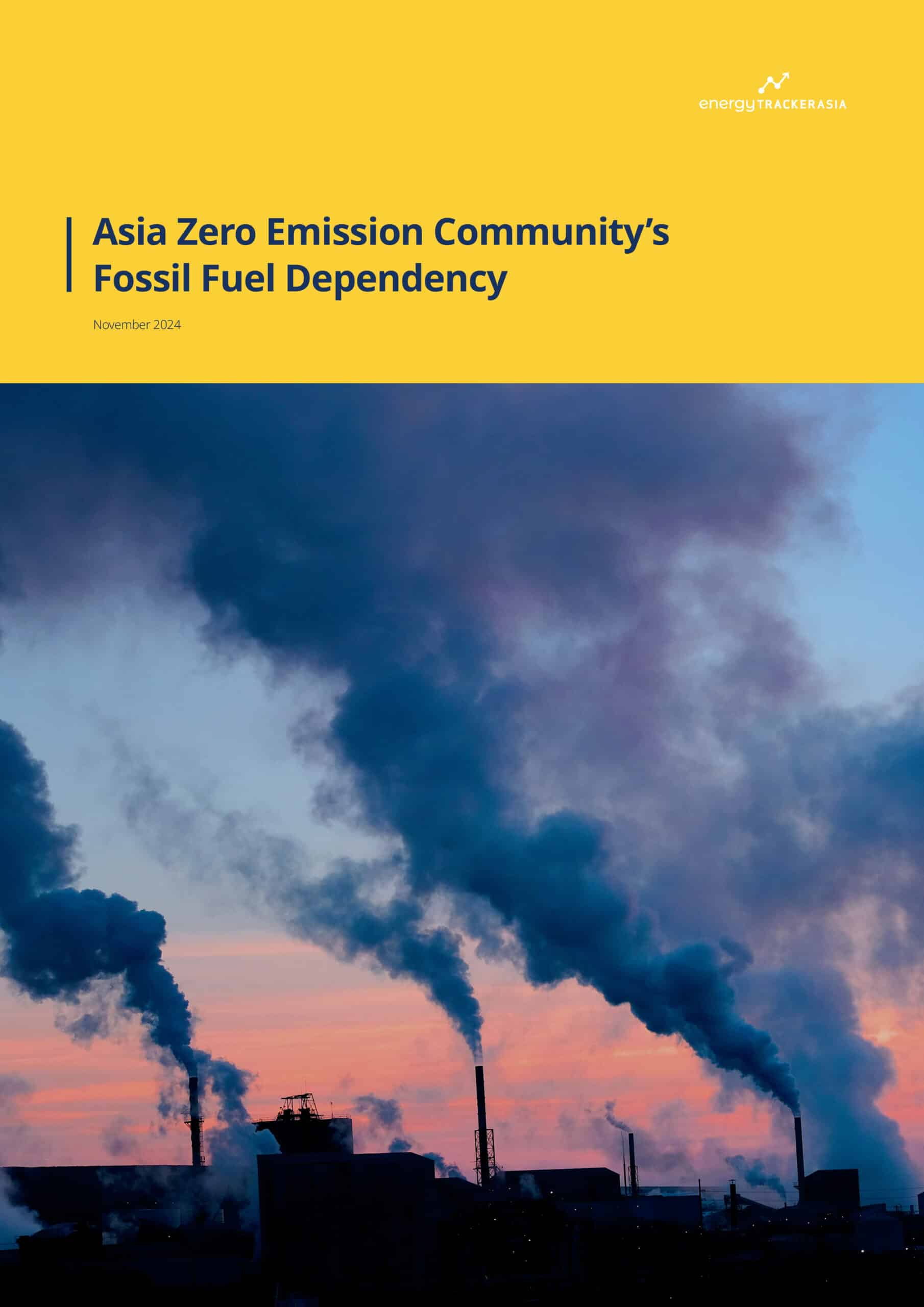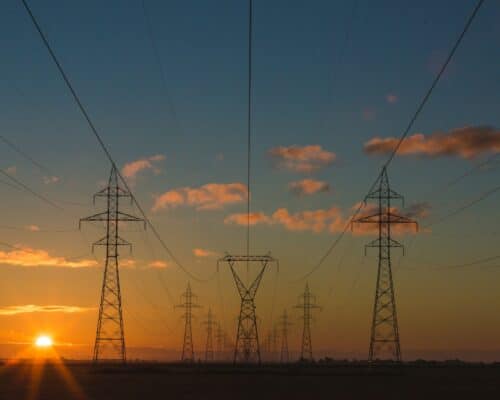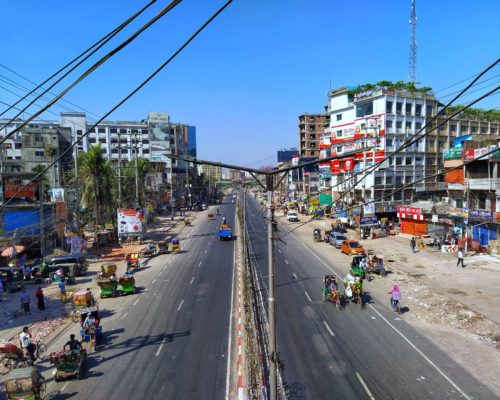47th ASEAN Summit 2025 Ends With Trump Promising Support to Southeast Asia
10 November 2025 – by Viktor Tachev
The 47th ASEAN Summit 2025 took place between Oct. 26 and 28 in Kuala Lumpur, Malaysia. During the event, parties convened over 20 related meetings, including discussions among ASEAN countries and their partners, such as China, Japan, South Korea and Australia. While high-profile guests such as China’s leader, Xi Jinping, and India’s Narendra Modi were absent, there was a notable presence: US President Donald Trump. Throughout the summit, the US delegation strengthened its ties with ASEAN nations, securing rare earths deliveries and striking deals to supply fossil fuels to the region.
While Southeast Asian economies managed to strike tariff deals and were promised Trump’s support on crucial matters, it became glaringly evident that the region is entering a critical era where it must balance its ties with superpowers like China and the US, while prioritising its own interests. And when it comes to the energy transition, these interests are more aligned with China and its all-out renewable energy policy, than the fossil fuel interests of the US and Japan.
Trump’s Asia Tour: US Secured Rare Earths and Ramped Up Fossil Fuel Exports to Developed and Developing Asia
On the first day of the ASEAN Summit, the United States signed trade deals and agreements on critical minerals supplies with four Southeast Asian nations, including Thailand, Malaysia, Cambodia and Vietnam. The moves aimed to address existing trade imbalances and diversify the supply chains of rare earths following China’s tightening of its exports.
While Malaysia, which holds over 16.1 million tonnes of rare earth deposits, has banned their export in a bid to develop its downstream sector, it has agreed not to impose bans or export quotas on the US. The Southeast Asian country also pledged to invest USD 70 billion in the US economy over the next 10 years.
The US also signed reciprocal trade deals with Malaysia and Cambodia, as well as a framework trade pact with Thailand. While it will maintain the existing 19% tariff rate on exports from the three nations, Trump promised to consider zero tariffs for some Southeast Asian goods.
A similar framework was announced for Vietnam, which will be subject to a 20% tariff for exports to the US. The Southeast Asian nation’s delegation promised to significantly boost its purchases of US products to reduce the existing trade surplus between the two countries.
Among the sectors where the US and Southeast Asian nations struck trade or other deals are cosmetics, pharmaceuticals, aerospace technologies, telecommunications services and various commodities.
The US also secured preferential access to the Southeast Asian market for different goods, while ASEAN leaders told Trump they would do more to protect labour rights and strengthen environmental protections.
Trump’s attendance aside, the 47th ASEAN Summit offered other highlights as well. For example, the group welcomed Timor-Leste as its 11th member.
Furthermore, Thailand and Cambodia signed the Kuala Peace Lumpur Accord, an enhanced ceasefire agreement following deadly border clashes between the neighbours earlier this year. They agreed on the truce after Trump had threatened to increase trade tariffs on US exports to both countries to 49% should they not resolve the border issue, and 19% if they reached a deal.
The 47th ASEAN Summit Brought Southeast Asia Closer to the US
According to experts, Trump’s visit aimed not only to secure rare earth deliveries but also to increase the US influence in the region, which has recently strengthened its cooperation with China. He assured ASEAN leaders of 100% commitment to the region, promising that the US will remain a strong partner to Southeast Asia. While this engagement remains transactional and bilateral, it sends critical geopolitical signals, including significant progress from Trump’s April announcement, when he threatened countries in the region with some of the highest tariffs in the world, before scaling back the rates for most economies to 20% or lower.
However, ASEAN nations also made moves to strengthen their ties with China and affirm the regional economic integration with the bloc’s largest external partner. During the 28th ASEAN-China Summit, China issued a cautionary note on “economic coercion” and “bullying”, which experts interpreted as a jab at the US’ tariff-driven policy.
The developments that have taken place during the 2025 ASEAN Summit reveal that Southeast Asia is becoming an ever-more important piece in the geopolitical puzzle. While China and the US are competing to increase their influence over the region, ASEAN nations can capitalise on the situation and use their partnerships to advance on key issues, including climate action and the energy transition.
Trump Met Japan’s and China’s Leaders to Strike Energy Deals
The meeting between US President Trump and Japan’s New Prime Minister, Sanae Takaichi, was marked by mutual praise and heralded as a very positive first step in the relationship between the two leaders. Trump expressed support for Japan’s first female prime minister and promised that his country would be there for “anything” Japan wanted or “any favours” it needed.
The two leaders signed a deal on rare earth minerals and a document marking a new “golden age” of US-Japan relations. They also agreed to implement deals struck earlier, including a 15% tariff deal. Takaichi pledged to increase defence spending, which Trump requested earlier this year.
However, Japan’s prime minister reportedly refused Trump’s request to ban Russian LNG imports to pressure it to stop the war in Ukraine. According to reports in Nikkei, the prime minister told the US president that doing so would only “make China and Russia happy”. Takaichi also cited the risk of domestic power shortages as a reason why Japan plans to continue buying Russian LNG.
Takaichi also signed a USD 332 billion commitment for Japan and various Japanese companies to support critical energy infrastructure in the US, including nuclear power plants, a priority for the new prime minister.
Reuters also reported that both governments released a list of projects in the fields of energy, artificial intelligence and critical minerals, according to which, Japanese companies will invest up to USD 400 billion in the US.
In a highly anticipated meeting in South Korea, Donald Trump also met China’s Xi Jinping, with the leaders reaching a trade truce. The biggest highlight of the meeting was an agreement for China to lift the ban on rare earth exports to the US for one year, which Trump said he expected to be extended annually.
According to the US administration, China has also agreed to start buying oil and gas from the US.
The Impact of the Recent Events on ASEAN’s Energy Transition
What became evident from Trump’s tour across Asia was that the US is seeking to find new markets for oil and gas exports, and ASEAN nations have emerged as a key target.
During the 47th ASEAN Summit, Thailand committed to spending USD 5.4 billion annually on US oil and LNG. Earlier this year, Japan made a similar commitment, agreeing to buy record amounts of LNG, in a bid to appease President Trump and avoid his aggressive tariff policy.
Southeast Asian nations are also a prime target market for Japan and its industry to export its fossil fuel technologies, including ammonia co-firing at coal power plants. However, Bloomberg NEF warns that neither LNG nor ammonia co-firing can compete with the levelised cost of electricity (LCOE) that renewables promise. The experts note that scaling up renewables remains the most economically viable pathway for the Philippines, Malaysia and Thailand to meet their decarbonisation and energy transition goals.
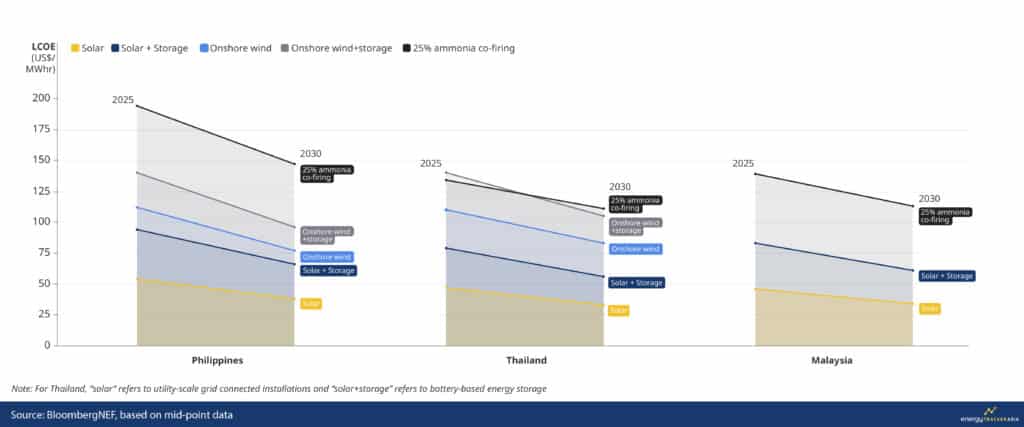
In that sense, while prioritising fossil fuel and technology imports might appease ASEAN’s trade partners, such as Japan and the US, it will lock the region into a future of energy dependence, high emissions and environmental and health risks.
Instead, ASEAN nations can consider China’s energy transition blueprint, based on the mass deployment of cheaper and cleaner power sources, such as solar and wind power. Doing so would unlock significant economic benefits, including saving trillions of dollars, even without accounting for climate damage or climate policy co-benefits, as well as creating millions of new jobs and ensuring more stable and affordable power prices for households and businesses. According to IRENA, the energy transition will help Southeast Asia reduce energy costs by USD 160 billion and save up to USD 1.5 trillion in cumulative costs from the health and environmental damage caused by fossil fuels by 2050. Furthermore, Ember estimates that if ASEAN nations prioritise investing USD 4-10.7 billion in smart grids, they can avoid USD 2.3 billion in annual economic losses by 2040 and create up to 650,000 jobs.
All those arguments chart a clear path for ASEAN nations. With COP30 around the corner and major Southeast Asian economies about to submit their updated NDCs, it will soon become evident whether they will prioritise their economic and societal well-being or succumb to external pressure and the interests of the fossil fuel lobby.
by Viktor Tachev
Viktor has years of experience in financial markets and energy finance, working as a marketing consultant and content creator for leading institutions, NGOs, and tech startups. He is a regular contributor to knowledge hubs and magazines, tackling the latest trends in sustainability and green energy.
Read more